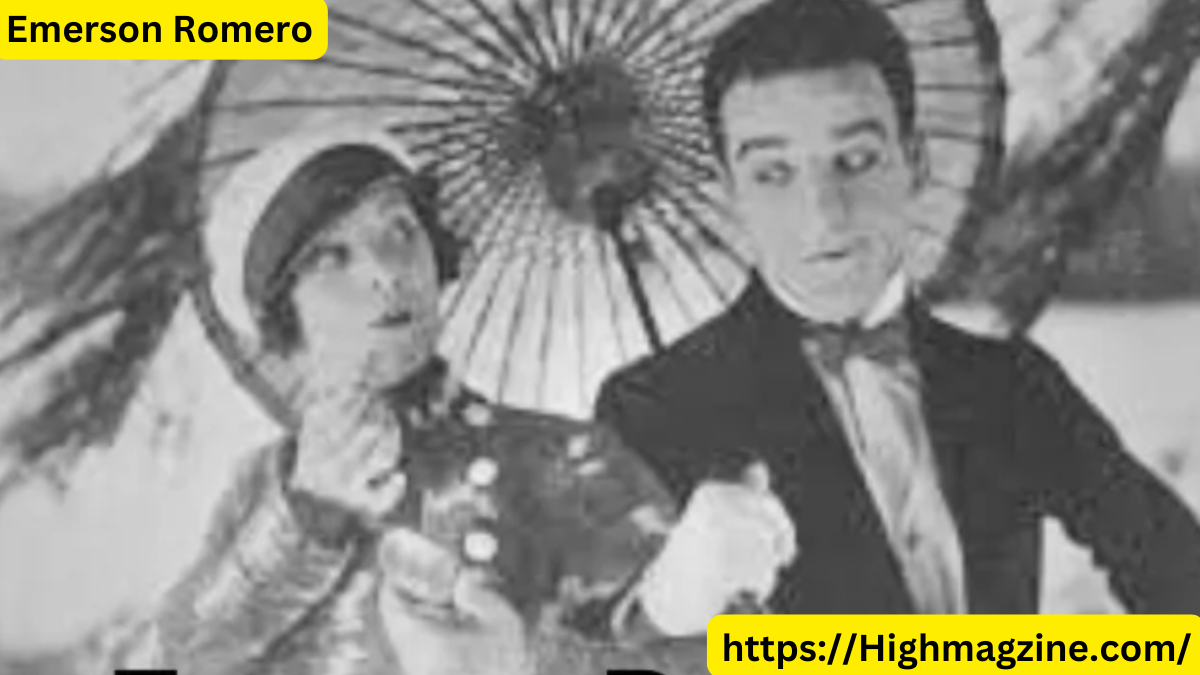Early Life and Background of Emerson Romero
Emerson Romero was born on August 19, 1900, in Havana, Cuba, into a family deeply connected to the arts. As a cousin of famed actor Cesar Romero, Emerson’s roots were rich with creative potential. However, his path would diverge uniquely and historically. At the age of six, Emerson Romero lost his hearing due to an illness, a life-altering event that would eventually inspire his lifelong advocacy for the deaf community. Despite this challenge, Romero’s family supported his education, leading him to attend the New York School for the Deaf. It was there that Romero developed his love for performance and storytelling, traits that would later define his remarkable career.
Entry into Silent Films and Acting Career
In the 1920s, the silent film era was booming, offering opportunities for many aspiring actors, including those from the deaf community. Emerson Romero saw silent films as a medium where deafness was not a barrier but rather a different lens through which to approach acting. His expressive body language and emotive facial expressions made him a natural fit for silent cinema. Romero began to appear in several silent short films, captivating audiences without the need for spoken dialogue. His performances were noted for their emotional clarity and depth, reflecting his strong understanding of visual storytelling.
However, the advent of “talkies,” or talking pictures, in the late 1920s posed significant challenges. As the film industry transitioned towards synchronized sound, many deaf actors found themselves marginalized. Romero was no exception. Though immensely talented, the rise of sound in film effectively ended his acting career. Yet instead of retreating, Emerson Romero chose a different and impactful path, determined to find ways for the deaf community to continue enjoying movies.
Innovating Captioning for the Deaf Community
Realizing that sound films excluded deaf audiences, Emerson Romero began to search for solutions. In 1947, he devised an early form of film captioning by physically cutting and splicing captions onto existing film prints. Romero’s method involved inserting photographic slides containing written dialogue between scenes, allowing deaf viewers to follow along with the storyline. While primitive and often disruptive to the film’s pacing, Romero’s system was a groundbreaking innovation. It demonstrated the feasibility of making films accessible to the deaf and hard of hearing, sparking broader discussions around accessibility in entertainment.
Romero’s pioneering spirit laid the groundwork for modern closed-captioning techniques. Although his methods were eventually superseded by more sophisticated technologies, his contributions were invaluable. He proved that media could and should be adapted to meet the needs of all audiences, regardless of ability. His early captioning experiments would influence the future development of closed-captioning systems for television and cinema, fundamentally changing media accessibility for generations to come.
Advocacy and Work with Deaf Organizations
Beyond his technical innovations, Emerson Romero dedicated much of his life to advocacy within the deaf community. He became a key figure in organizations like the National Association of the Deaf, using his experiences to highlight the systemic barriers faced by deaf individuals in mainstream society. Through public speaking engagements, written articles, and active participation in community events, Romero emphasized the importance of education, representation, and equal opportunities for the deaf.
He championed not only technological solutions but also social and legislative reforms that would improve the lives of deaf people. Romero believed that accessibility was a civil right, long before such ideas gained mainstream traction. His advocacy efforts helped to raise awareness among hearing individuals and policymakers, contributing to gradual societal shifts toward greater inclusivity.
Legacy and Impact on Media Accessibility
Emerson Romero’s impact resonates strongly today, even if his name is not widely known outside specialist circles. His early efforts at making films accessible set a precedent that would eventually lead to the widespread adoption of closed captioning on television and movies. Today, millions of people benefit from captioning services not only for entertainment but also in educational, professional, and emergency contexts.
Romero’s work also paved the way for broader disability rights movements, influencing later advocates who would fight for comprehensive civil rights protections for people with disabilities. The Americans with Disabilities Act (ADA), signed into law in 1990, embodied many of the ideals Romero had championed decades earlier: accessibility, equal opportunity, and non-discrimination.
In the world of entertainment, the push for more inclusive storytelling continues. From captioned videos on streaming platforms to deaf actors starring in major film productions, the seeds sown by early pioneers like Emerson Romero are evident. His legacy reminds us that accessibility is not just about technology but about valuing diverse experiences and perspectives.
Recognition and Remembering Emerson Romero
Despite his considerable contributions, Emerson Romero remains a somewhat overlooked figure in popular history. However, within the deaf community and among scholars of media accessibility, he is rightly recognized as a trailblazer. Efforts have been made in recent years to bring greater attention to his work, including academic studies and exhibitions highlighting his innovative spirit and determination.
Romero’s story serves as an inspiration, showing that one individual’s perseverance can ignite systemic change. His willingness to tackle exclusion head-on and his belief in the power of media to connect all people stand as powerful testaments to his vision and humanity. By advocating for access to culture and communication, Romero helped lay the foundation for a more inclusive world.
Emerson Romero’s Influence on Future Generations
Today’s generation of deaf creators, actors, and activists continue to benefit from the groundwork laid by Emerson Romero. As society grows increasingly aware of the need for representation and inclusion, Romero’s life story offers valuable lessons. He demonstrated that creative problem-solving, coupled with unwavering advocacy, could break down even the most entrenched barriers.
New technologies such as real-time captioning, automatic subtitles, and video relay services owe a philosophical debt to Romero’s early efforts. Moreover, the visibility of deaf performers in television, film, and theater reflects a cultural shift that he helped initiate, even if posthumously.
Educational institutions and cultural Emerson Romero organizations are now incorporating lessons from pioneers like Romero into their curriculums and outreach efforts, ensuring that his contributions are remembered and built upon. His example challenges everyone to think critically about accessibility and inclusion, not as optional features, but as essential elements of a just society.
Conclusion: Emerson Romero’s Enduring Significance
Emerson Romero’s life was marked by resilience, innovation, and an unyielding commitment to inclusion. From his early days as a silent film actor to his pioneering work in film captioning, Romero consistently sought to expand opportunities for the deaf community. His vision was not limited to the technologies of his time but extended into a broader dream of equal access to communication and culture.






